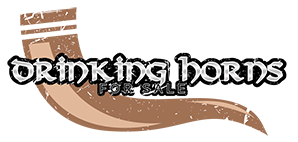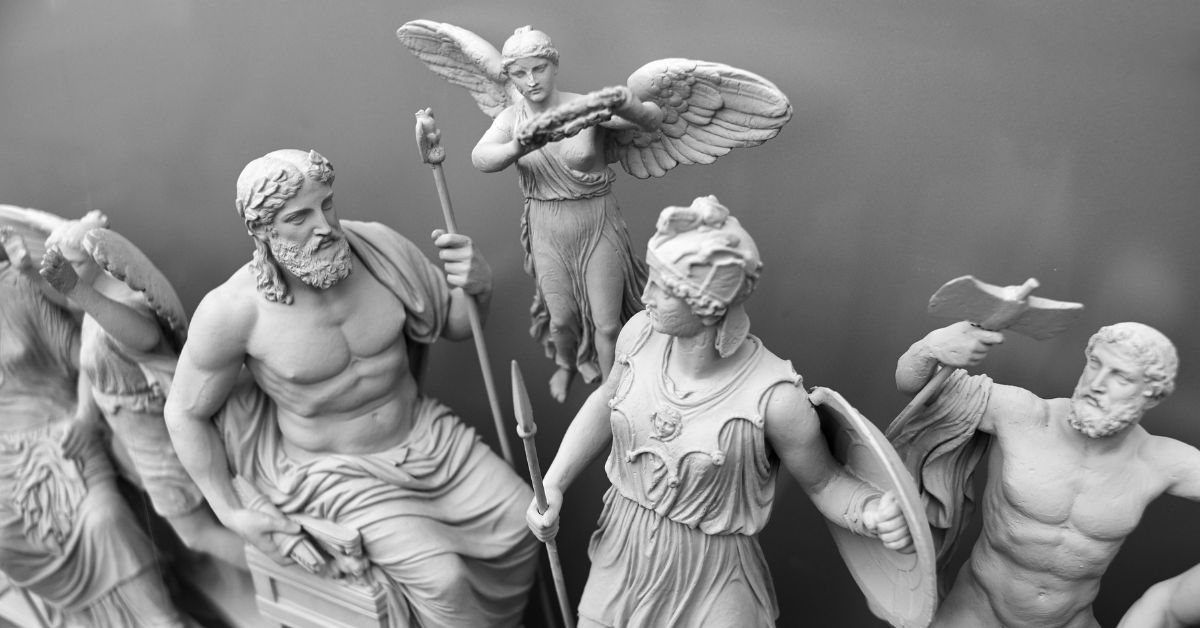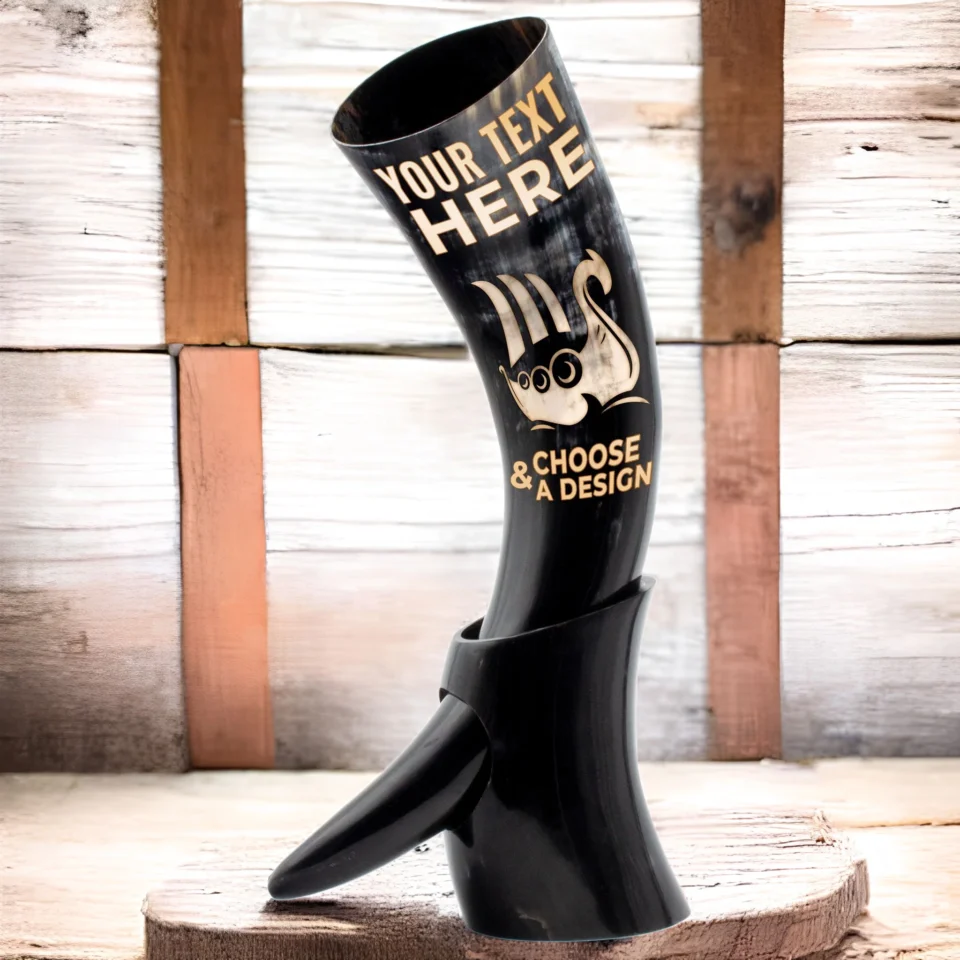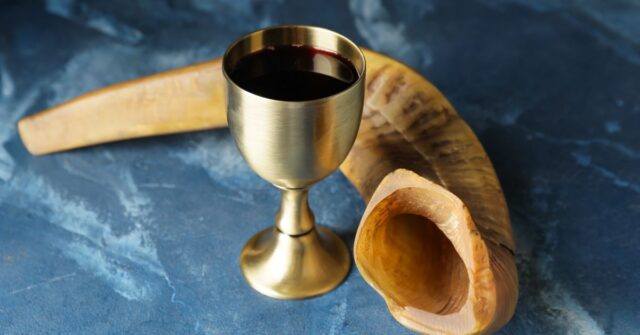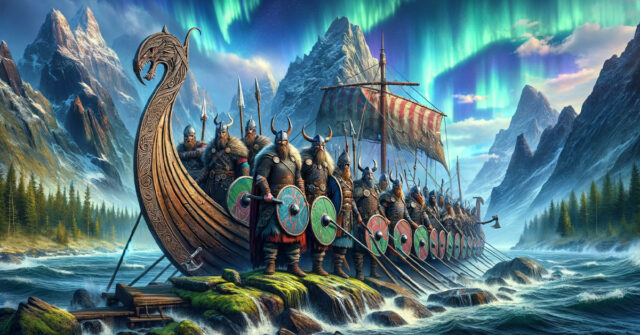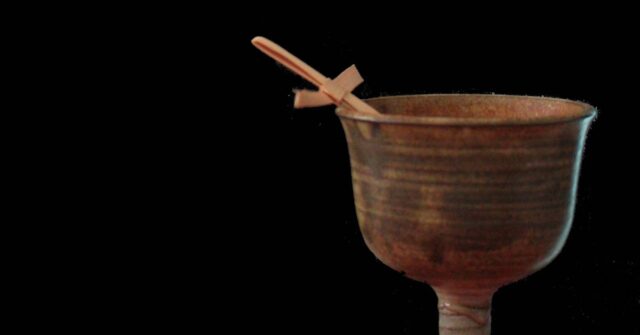Drinking horns have captivated the human imagination for centuries. They evoke images of grand feasts, heroic legends, and ancient traditions.
This blog post delves into the historical and cultural significance of drinking horns, spotlighting famous figures and civilizations that cherished these vessels.
Introduction
Drinking horns are not merely containers; they are symbols of cultural identity, status, and tradition.
From the earliest uses in ancient Thrace to their iconic representation in Viking culture, these vessels have a storied history.
They have been used in rituals, celebrations, and even buried with the dead, signifying their importance across various epochs and societies.
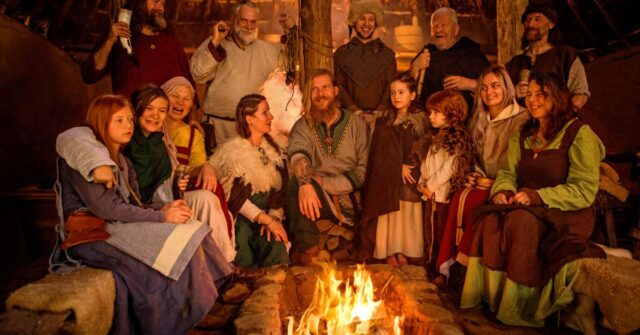
The Cultural and Historical Significance of Drinking Horns
Throughout history, drinking horns have been more than just practical items. They have served as ceremonial objects, symbols of status, and vessels of mythology.
Their significance spans continents and eras, from the ancient Thracians and Scythians to the Greeks, Romans, and Vikings.
Each culture imbued these horns with unique meanings and uses, making them fascinating subjects for historical study.
Early Use of Drinking Horns
The earliest recorded use of drinking horns dates back to ancient civilizations like the Thracians and Scythians.
These cultures utilized animal horns for both practical and ceremonial purposes, setting the stage for their enduring legacy.
The Thracians and Scythians: Pioneers of Drinking Horns
The Thracians and Scythians were among the first known cultures to use drinking horns. Thracians, residing in the Balkans, used these vessels extensively in their daily lives.
Scythians, on the other hand, often crafted their horns from metal and horn, reserving them for warriors and royalty.
These early examples highlight the dual role of drinking horns as both everyday tools and symbols of prestige.
Ancient Greek Traditions and Dionysus
In ancient Greece, drinking horns, or “keras,” were closely associated with the god Dionysus, the deity of wine and festivity.
These vessels were often depicted in Greek art, showing Dionysus and his followers indulging in wine.
The Greeks adopted the practice from the Thracians, and it became a staple in their celebratory customs.
Roman Ceremonies and Innovations
The Romans took the drinking horn tradition and added their flair, creating versions from glass and metal adorned with intricate designs.
These horns were used in feasts and important ceremonies, symbolizing power and sophistication.
Roman adaptations of drinking horns reflect their tendency to borrow and enhance cultural practices from conquered lands.
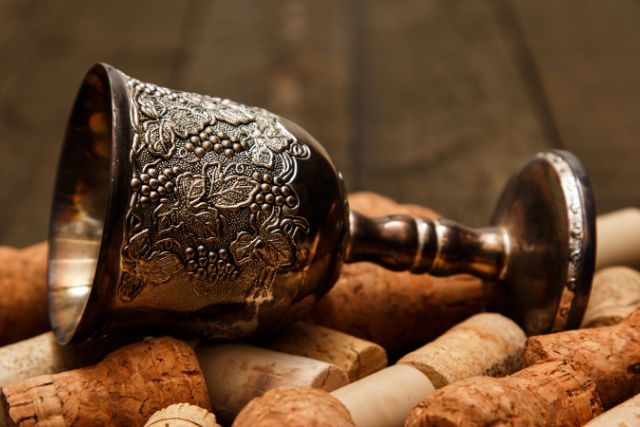
The Viking Era
When we think of drinking horns, Viking culture often comes to mind. The Vikings elevated the use of these vessels, embedding them deeply into their social and mythological fabric.
Mythology and Legends: Thor and the Seas
Norse mythology is replete with references to drinking horns.
One of the most famous stories involves Thor, who was tricked into drinking from a horn connected to the sea, inadvertently causing the tides.
This myth underscores the drinking horn’s role not just as a practical item but as a mystical object within Norse lore.
Valkyries and the Afterlife: Valhalla’s Drinking Horns
In Norse beliefs, Valkyries presented drinking horns to fallen warriors in Valhalla, the hall of the slain.
This ritual symbolized honor and eternal celebration. Drinking horns found in burial sites often belonged to women, highlighting their role in these ceremonies.
Feasts and Celebrations: Social Importance of Drinking Horns
Viking feasts were grand events where drinking horns were prominently featured.
These gatherings were not just about merriment but also about affirming social bonds and hierarchies. Each horn was a testament to the owner’s status and the craftsmanship of the era.
Craftsmanship and Decoration in Viking Drinking Horns
Viking drinking horns were often elaborately decorated with carvings and precious metals.
These decorations were not only aesthetic but also served to enhance the symbolic value of the horns.
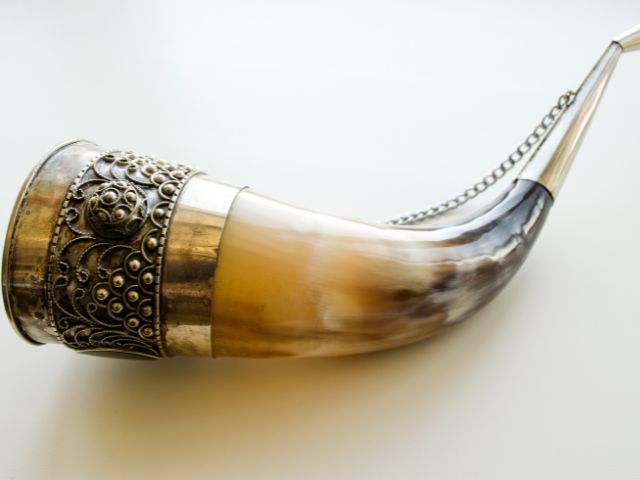
Passing Down Through Generations: Heirlooms and Legacy
The craftsmanship involved in making these horns was a point of pride and a marker of cultural identity.
Drinking horns were treasured possessions, often passed down through generations.
They were more than just drinking vessels; they were family heirlooms that carried stories and traditions.
This practice ensured that the cultural significance of drinking horns was preserved over centuries.
Medieval and Renaissance Periods
During the medieval and Renaissance periods, drinking horns saw a resurgence in popularity, often used in Christian ceremonies and depicted in literature.
Christian Ceremonies and the Rebirth of Drinking Horns
As pagan cultures converted to Christianity, many retained the use of drinking horns in their ceremonial practices.
These vessels became symbols of communal and religious gatherings, adapting to the new cultural and religious contexts of medieval Europe.
Medieval Literature: King Horn and Arthurian Tales
Drinking horns feature prominently in medieval literature, including the chivalric romance “King Horn” and Arthurian legends.
These stories highlight the continued significance of drinking horns in European cultural and social life, linking them to themes of heroism and nobility.
Renaissance Elegance: Drinking Horns as Decorative Art
In the Renaissance, drinking horns were often transformed into ornate works of art.
Wealthy patrons commissioned horns made from precious materials that were adorned with intricate designs.
These pieces were not just functional but also displayed as symbols of wealth and refinement.
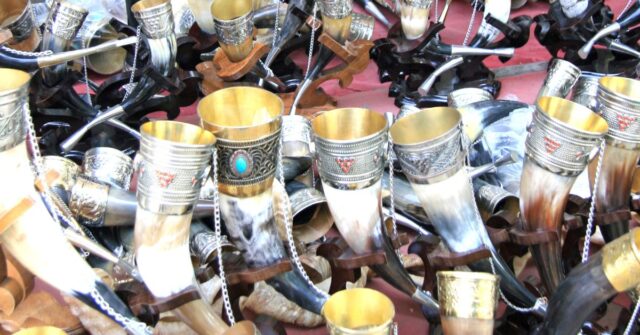
Modern Relevance
Despite their ancient origins, drinking horns continue to captivate modern enthusiasts. Their historical and cultural resonance ensures their place in contemporary collections and practices.
19th and 20th Century Revival
The 19th-century Viking revival saw a renewed interest in drinking horns, particularly in Germany and Austria.
These vessels were used in university rituals and public ceremonies, symbolizing a connection to a storied past.
Current Uses and Popularity
Today, drinking horns are popular among history enthusiasts, reenactors, and collectors.
They are used in various contexts, from Renaissance fairs to modern feasts, celebrating their rich heritage and unique design.
Crafting Techniques: Combining Tradition and Modernity
Modern artisans continue to craft drinking horns using traditional methods, often blending them with contemporary techniques.
This fusion ensures that each piece retains historical authenticity while meeting modern standards of craftsmanship.
Famous Historical Figures and Their Drinking Horns
Several historical figures are famously associated with the use of drinking horns, highlighting their cultural importance across different eras.

Seuthes of Thrace: The Historical Account by Xenophon
Seuthes, a Thracian leader, was famously described by the Greek historian Xenophon as using a drinking horn in his daily life.
This account provides valuable insight into the cultural practices of the Thracians and their reverence for these vessels.
Dionysus: The Greek God of Wine and Festivity
Dionysus, the Greek god of wine, is often depicted with a drinking horn, symbolizing his association with revelry and celebration. This imagery underscores the horn’s role in ancient Greek culture as a vessel for joy and communion.
Odin and Thor: Norse Mythological Figures
Odin and Thor, central figures in Norse mythology, are frequently associated with drinking horns.
These vessels appear in numerous sagas and myths, emphasizing their importance in Viking rituals and storytelling.
Beowulf: The Anglo-Saxon Hero
The epic poem “Beowulf” features drinking horns as significant items in the hero’s journey.
These references highlight the horn’s role in Anglo-Saxon culture as symbols of hospitality and heroism.
Symbolism and Cultural Impact
Drinking horns are laden with symbolism and have left a lasting impact on various cultures, from ancient times to modern interpretations.
Symbols and Imagery: From Wolves to Ravens
Drinking horns are often decorated with symbols like wolves and ravens, each carrying specific cultural meanings.
These symbols reflect the values and beliefs of the societies that used them, adding layers of significance to the vessels.
The Drinking Horn in Art and Literature
Throughout history, drinking horns have appeared in art and literature, symbolizing themes of festivity, valor, and tradition.
Their depiction in various media underscores their cultural resonance and enduring appeal.
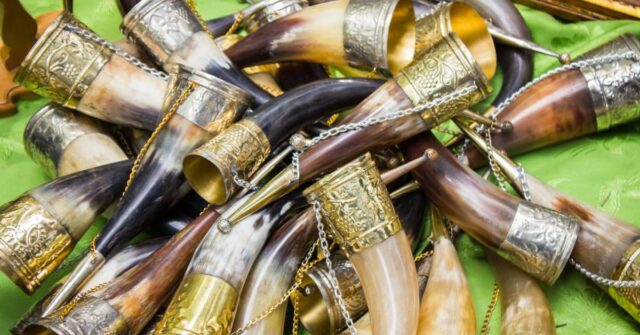
Conclusion
Drinking horns have traveled through time, from ancient rituals to modern celebrations. Their journey reflects the changing dynamics of human culture and the enduring allure of tradition.
The Enduring Legacy of Drinking Horns
The legacy of drinking horns is a testament to their cultural and historical significance. These vessels continue to fascinate and inspire, connecting us to our past while enriching our present.
Why Drinking Horns Matter Today
Today, drinking horns serve as reminders of our shared heritage. They connect us to ancient traditions and offer a tangible link to the stories and practices of our ancestors.
Whether used in historical reenactments, as decorative pieces, or even in modern-day celebrations, drinking horns retain their cultural significance and continue to captivate enthusiasts worldwide.
Owning a drinking horn is more than just having a piece of history; it’s about embracing the legacy of those who came before us and appreciating the artistry and tradition that these vessels represent.
As we continue to explore and celebrate our past, drinking horns will undoubtedly remain a cherished part of our cultural tapestry.
